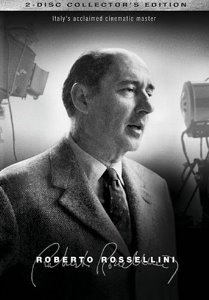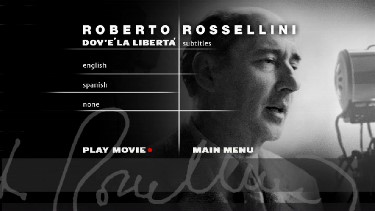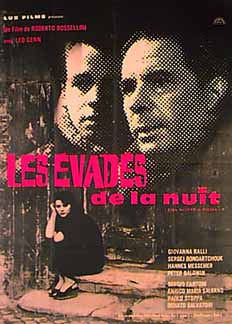![]()
![]()

![]()
![]()
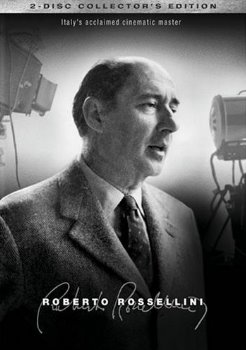
Roberto Rossellini: Director's Series - 2-disc Collector's Edition
Dov'Ŕ la libertÓ...? (1954) Era Notte a Roma (1960)
| Product
description (from LionsGate): Roberto
Rossellini shot his first film at the invitation of Vittorio
Mussolini, son of the Italian dictator. Even his early films had a
profound effect: Rossellini was credited with launching the Italian
Neorealism movement that used non-actors and real locations to
showcase the plight of working-class Italians. Legendary French
directors including Andre Bazin, Francois Truffaut and Jean-Luc
Godard also called him the godfather of the French New Wave style.
The ROBERTO ROSSELINI 2-DISC COLLECTOR'S EDITION includes two
films never before seen on DVD in the U.S. DOV'E LA LIBERTA...?
(WHERE IS FREEDOM?) Rossellini's darkly comic satire
showcases the great Italian comic TOTO as a barber who is imprisoned
for murdering his wife's suspected lover. After twenty years,
Salvatore leaves the prison walls to find the world he once knew
gone. Salvatore realizes he has no choice but to find a way back to
prison where he feels certain he will be happier. In ERA NOTTE A
ROMA (ESCAPE BY NIGHT), an emotional war drama set in
Nazi-occupied Rome, a beautiful bootlegger (GIOVANNA RALLI) gives
sanctuary to three escaped POWs - an American pilot, a Russian
sergeant and a British major. By taking them in, she tragically
jeopardizes the safety of her Communist lover while the confinement
of the trapped prisoners brings their uneasy alliance to a boiling
point, symbolizing the chaos of the world around them. NOTE: It seems the description from Lionsgate's website (above) is fraught with inaccuracies as noted by fellow DVDBeaver ListServ member Tag Gallagher: Roberto
Rossellini shot his first film at the invitation of Vittorio
Mussolini, son of the Italian dictator.
Not true. His first two films were shorts about fish. His first
feature, La nave bianca, had no connection to Vittorio
Mussolini. His second feature, Un pilota ritorna, was based
on a story by Vittorio Mussolini and with a company of which VM was
the nominal head but in actuality had nothing to do with (because he
was fighting a war at the time); he certainly did not "invite"
Rossellini (although he did invite Renoir to come to Italy).
Rossellini's connection to the production company was through its
actual head, Franco Riganti, a friend from boyhood, who also backed
some of DeSica's first films and gave Fellini his first work. (Thanks kindly Tag!) |
![]()

(aka 'Dov'Ŕ la libertÓ...? ' or 'Where is Freedom?')
Directed by Roberto Rossellini
Italy 1954
| This dark satire gets our vote as the most scandalously unknown of Rossellini's films; it's something of a masterpiece and deserves a wide audience. (See it now, as you may never have another chance.) Designed to showcase the great Neapolitan comic Tot˛, he of the thrust chin, elastic limbs, and pinball eyes, DOV'╚ LA LIBERT└...? is an exploration of the themes of imprisonment and freedom, told (unusually for Rossellini) in flashback. Tot˛ plays Salvatore, a sweet-natured Roman barber who has been in prison for twenty years after he cut the throat of his best friend for having an affair with his wife. Released into a very different world than the one he knew, Salvatore encounters a series of perfidious tricksters, cold-hearted con men, and greedy schemers. Friends and family offer no refuge; they, too, are treacherous. Like so many of Rossellini's characters, the decent Salvatore finds the world untenable, and takes drastic action to ensure that he does not have to suffer its iniquity any longer. Working in a far more serious mode than he was accustomed to, Tot˛ is superb as the artless barber, who some critics have seen as a variation on the character of the saintly, isolated Irene in EUROPA 51, while others have condemned as spiritual sibling to Celestino in THE MACHINE TO KILL BAD PEOPLE - a self-appointed arbiter of morality with bourgeois notions of innocence. "For my taste, Rossellini's best film, and of the few I completely love. . . . It stupefied me with its cruelty and bitterness. It's a parable of the purest Swiftian type, unpitying and almost intolerable" (Pierre Kast, Cahiers du cinÚma). |
Posters
 |
 |
Theatrical Release: June 12th, 1947
Reviews More Reviews DVD Reviews
DVD Review: Lionsgate (2-disc) - Region 1 - NTSC
| DVD Box Cover |
|
CLICK to order from: |
| Distribution | Lionsgate - Region 1 - NTSC | |
| Runtime | 1:31:09 | |
| Video | 1.33:1
Aspect Ratio Average Bitrate: 5.83 mb/s NTSC 720x480 29.97 f/s |
|
|
NOTE: The Vertical axis represents the bits transferred per second. The Horizontal is the time in minutes. |
||
| Bitrate: |
|
|
| Audio | Italian (Dolby Digital 2.0) | |
| Subtitles | English, None | |
| Features |
Release Information: Edition Details:
• none |
|
| Comments: |
A single-layered DVD transfer and interlaced (see sample below) but aside from those weaknesses - the image quality is pretty good. Contrast is strong and detail very acceptable - actually considering the age - surprisingly good. I don't see excessive manipulation but am getting tired of these frugal transfers from Lionsgate. The, relatively weak, Italian track is supported with optional English or Spanish subtitles.
No extras at all but this humorous film might have been enticing as a DVD purchase had the second disc with 'Era Notte a Roma' been up-to-snuff'. But it isn't. Why do they even bother putting out such inferior digital productions? |
DVD Menus
 |
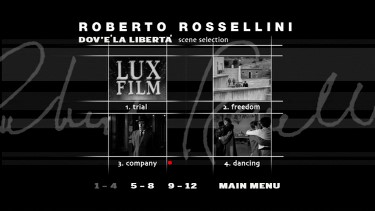 |
|
|
|
Subtitle Sample
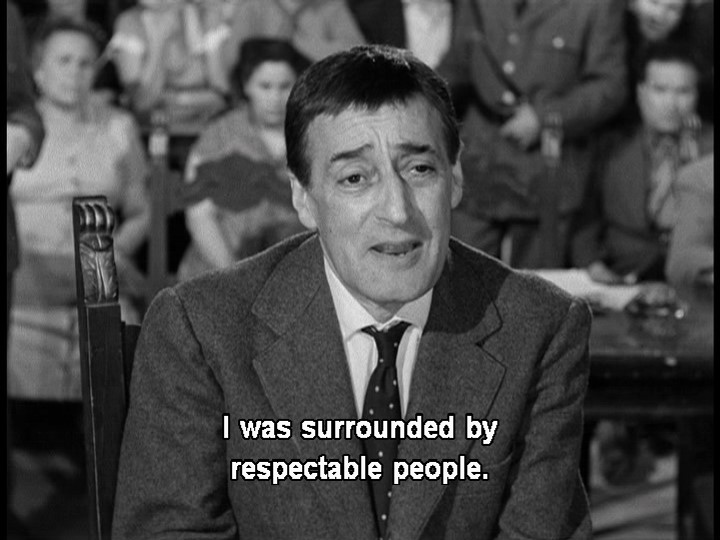 |
Screen Captures
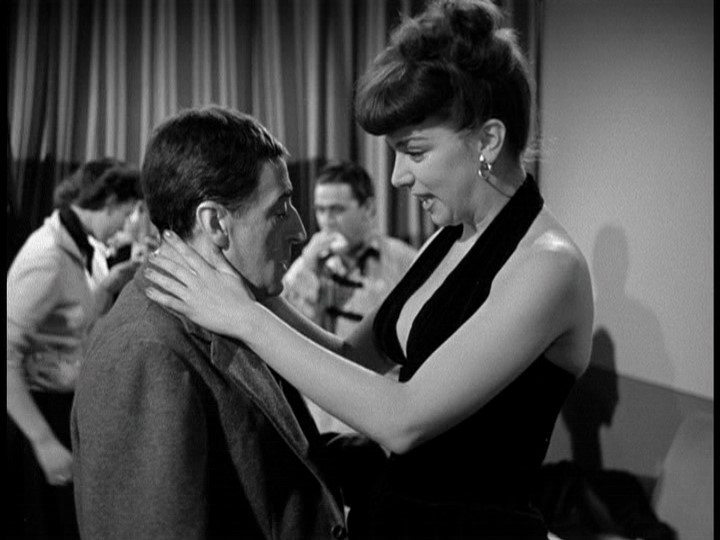 |
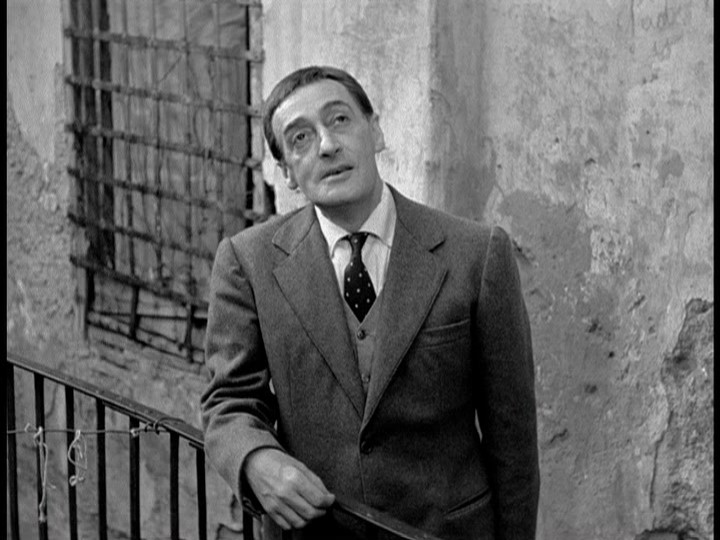 |
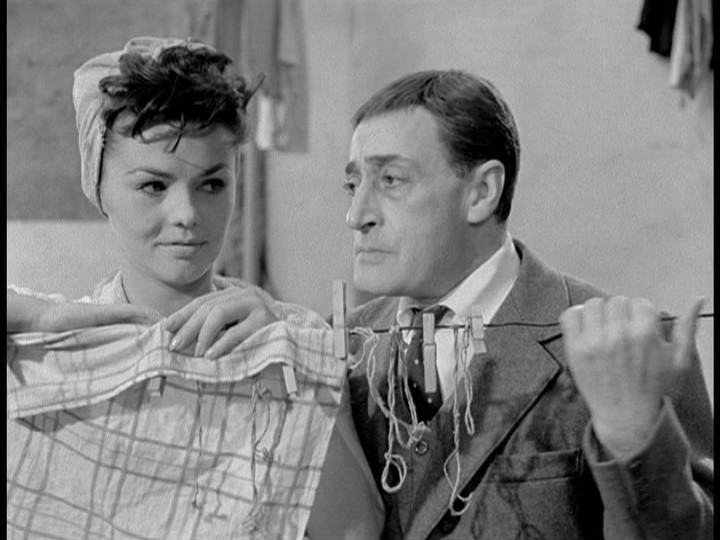 |
'Combing' visible
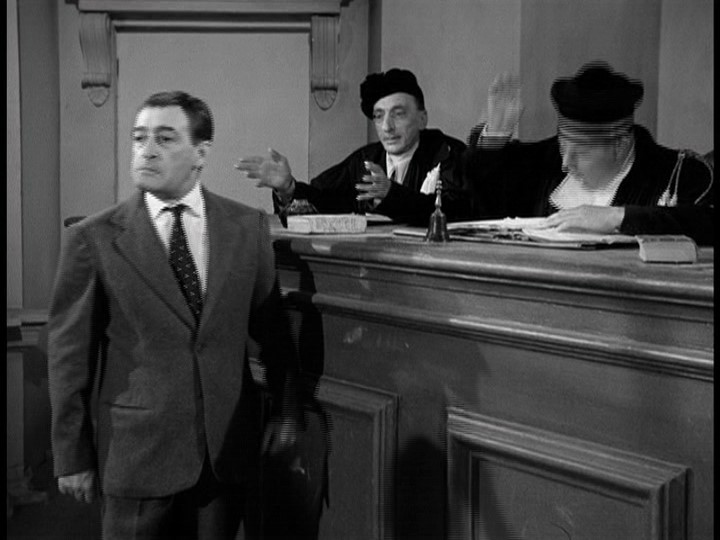 |
![]()
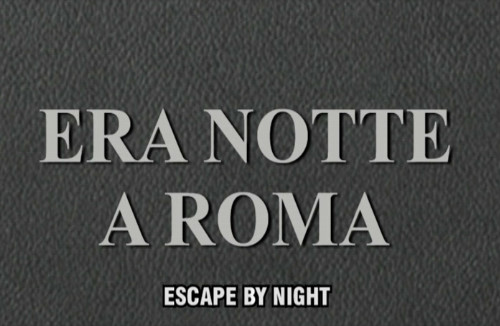
(aka 'Era Notte a Roma' or 'Blackout in Rome' or 'Escape by Night' or 'Wait for the Dawn')
Directed by Roberto Rossellini
Italy / Germany / Russia 1960
|
Stylistically an intriguing (and not wholly successful) mixture of Rossellini's early 'realism', Bergman-period melodrama, and the contemplative didacticism of his later films, this return to the milieu of Nazi-occupied Rome may not have the raw power of Rome, Open City, but is immensely affecting all the same. Three escaped Allied PoWs - a Brit, an American and a Russian - take refuge in the home of Roman black marketeer Ralli, whose Communist lover (Salvatori) is executed when they are betrayed by a corrupt, Nazi-collaborator priest. On one level, it's a fairly straightforward suspense movie, detailing the countless threats to the safety of the fugitives and the woman who provides sanctuary; on another, it's an unsentimental, PaisÓ-like celebration of the shared humanity that allows the various characters to communicate with one another despite linguistic differences and the wariness born of perilous circumstance. An uneven, flawed, but very intelligent work of enormous humanity. |
DVD Review: Lionsgate - Region 1 - NTSC
| DVD Box Cover |
|
CLICK to order from: |
| Distribution | Lionsgate - Region 1 - NTSC | |
| Runtime | 2:13:32 | |
| Video | 1.53:1
Aspect Ratio Average Bitrate: 6.48 mb/s NTSC 720x480 29.97 f/s |
|
|
NOTE: The Vertical axis represents the bits transferred per second. The Horizontal is the time in minutes. |
||
| Bitrate: |
|
|
| Audio | Italian (2.0) | |
| Subtitles | English, Spanish, None | |
| Features |
Release Information: Edition Details:
• none |
|
| Comments: |
NOTE: We reviewed the very weak Optimum Home Entertainment - Region 2 - PAL HERE. Unfortunately, even being dual-layered, this doesn't really fare any better than UK disc transfer (it may be marginally more detailed with deeper black levels). It is heavily pictureboxed and letterbox widescreen at around 1.55:1. Quite unfortunate that it is still not 16X9 enhanced. The image quality lacks detail, and shows spots of boosted contrast and noticeable scratches. The Italian audio track is imperfect but supported with optional English or Spanish subtitles.
I had hoped, as with the Bunuel 2-disc CE set HERE, that commentaries would be included, but instead this smells of an overpriced money-grab offering nothing at all in the way of supplements. Even if one of the transfers had been progressive I might have an inking to encourage a purchase but we, instead, recommend a 'pass'. Not on our watch Lionsgate. |
DVD Menus
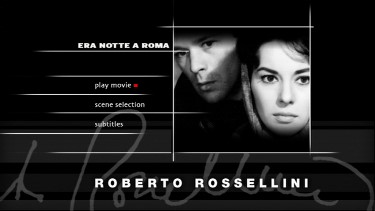 |
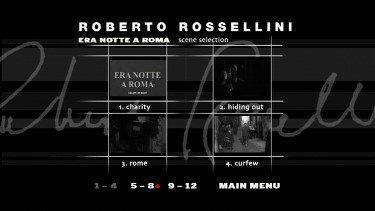 |
|
|
|
Subtitle Sample
Lionsgate - Region 1 - NTSC TOP vs. Optimum Home Entertainment - Region 2 - PAL BOTTOM (REVIEWED HERE)
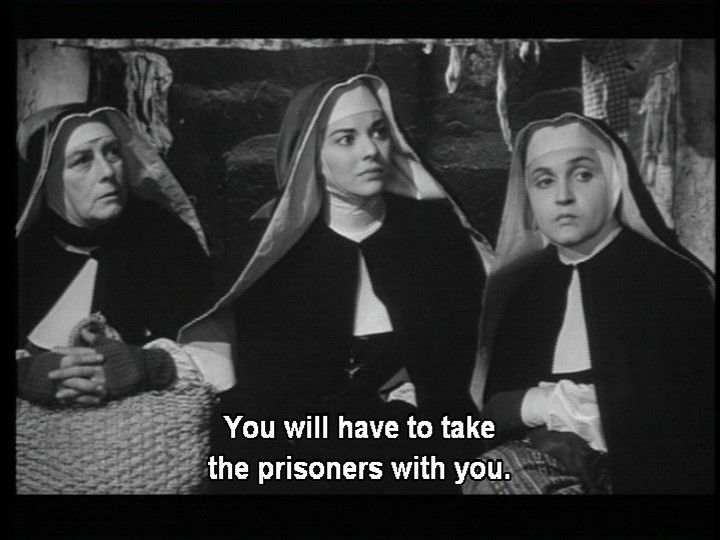 |
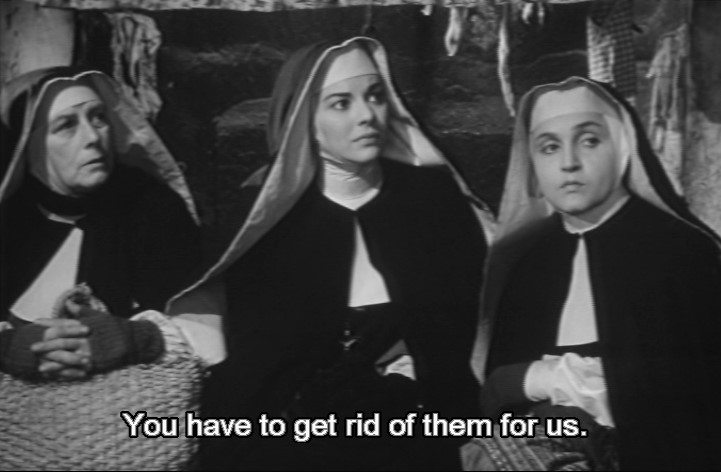 |
Screen Captures
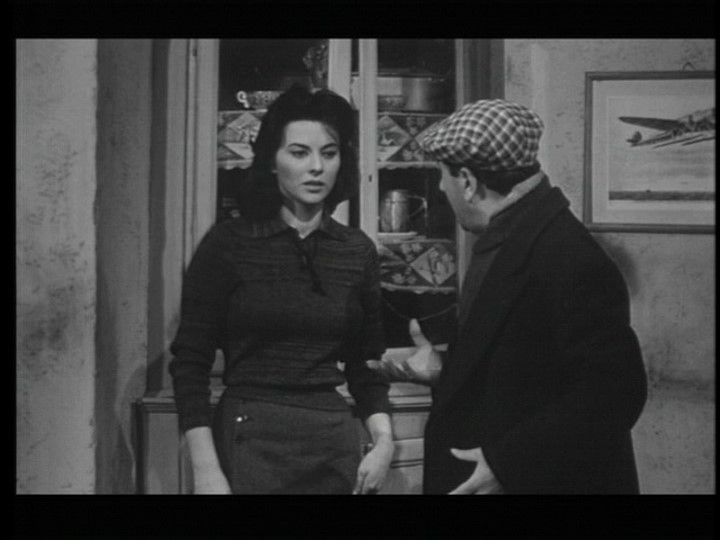 |
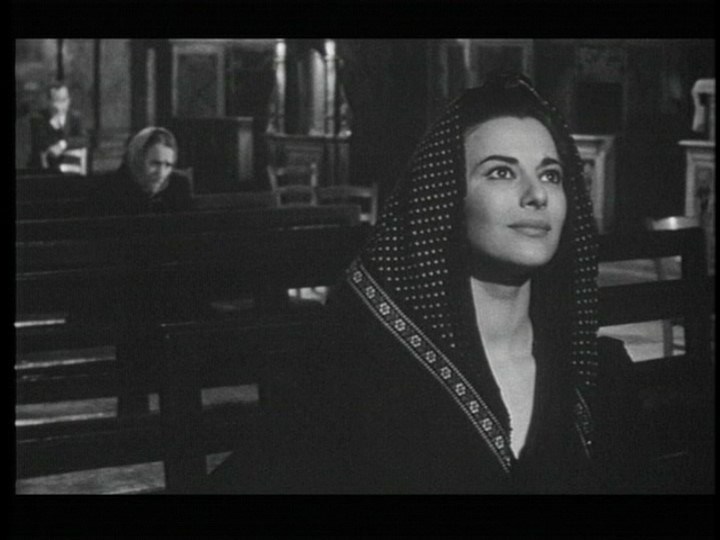 |
Bad 'combing' and 'ghosting'
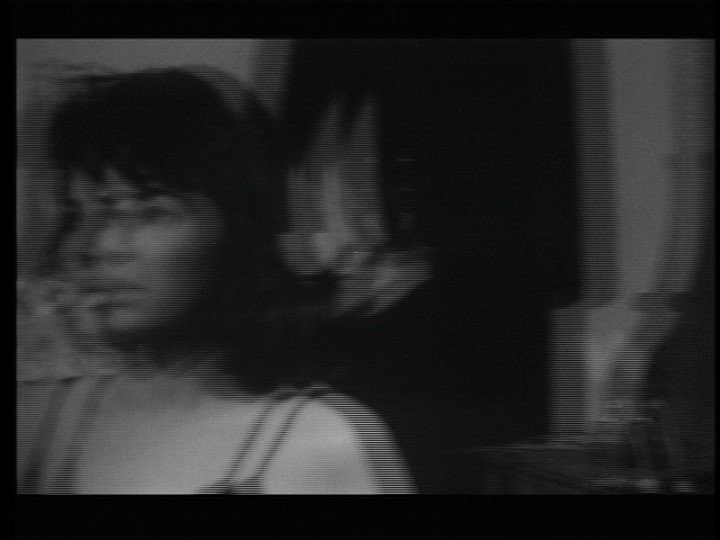 |
| DVD Box Cover |
|
CLICK to order from: |
| Distribution | Lionsgate - Region 1 - NTSC | |
![]()
![]()

![]()
![]()
